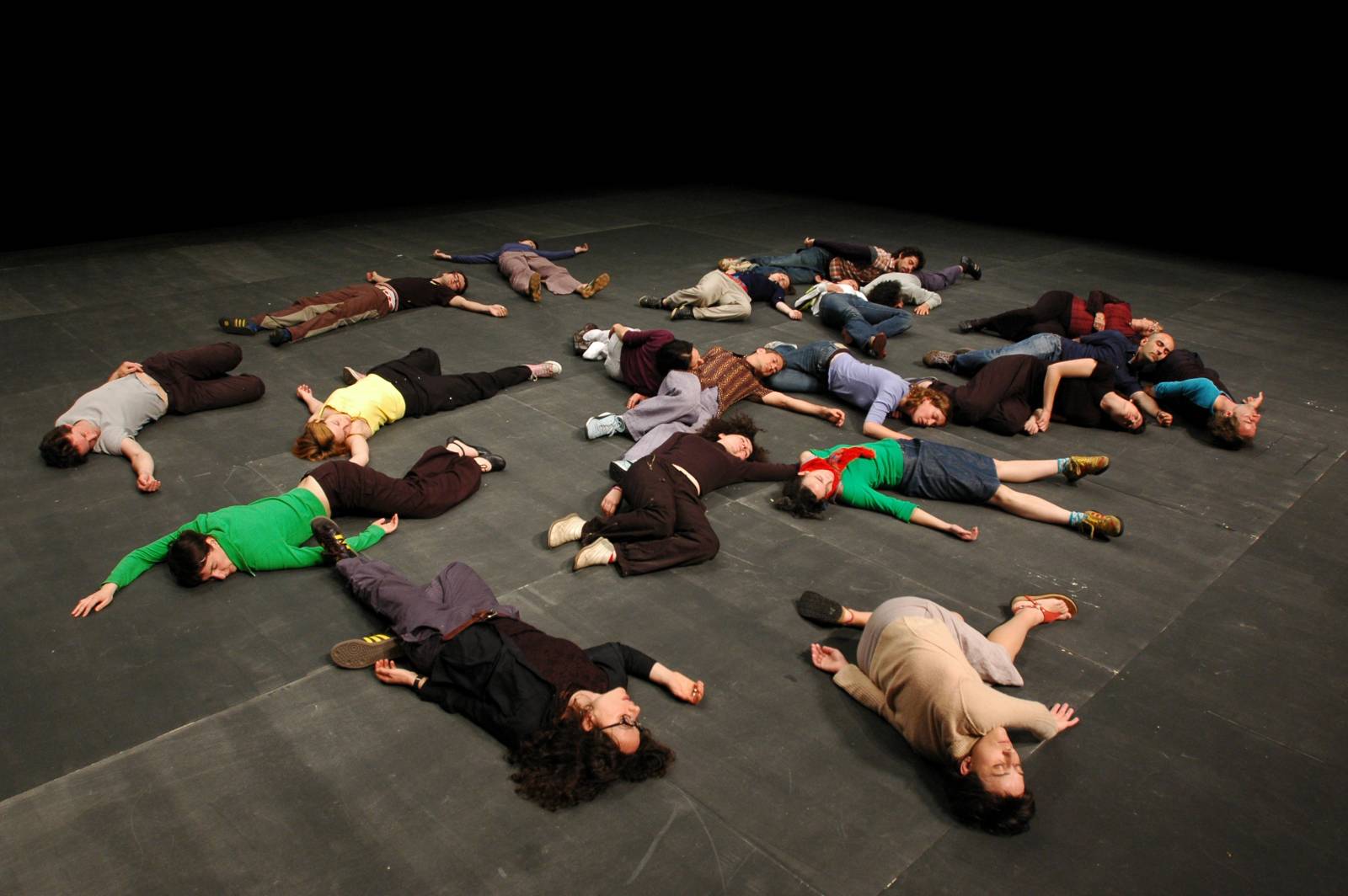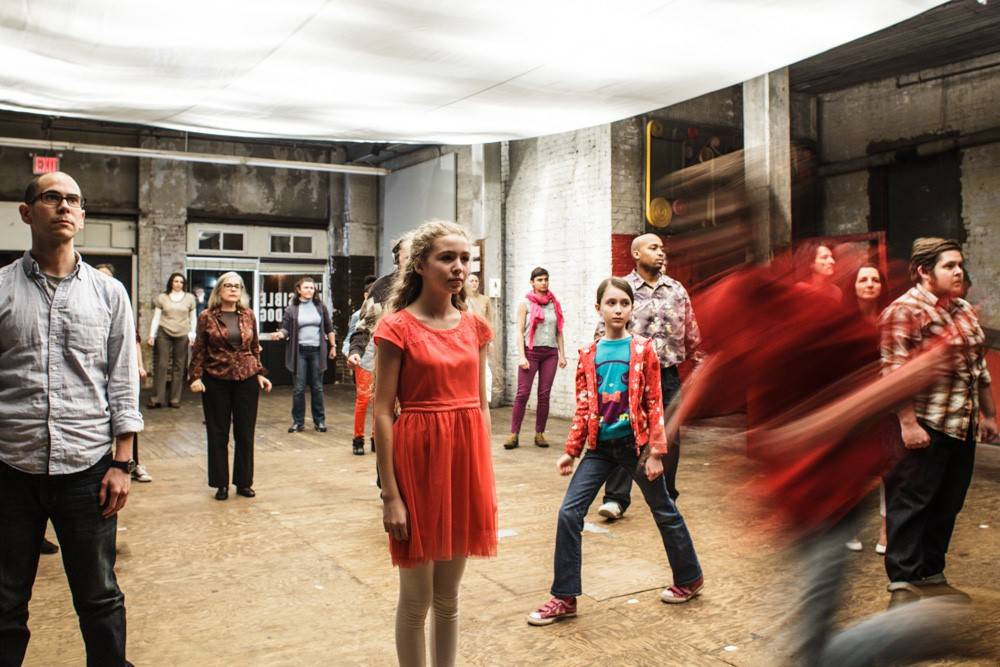Simon Dove
Simon Dove, an independent curator and dance educator, is co-curator of “Crossing the Line,” the annual trans-disciplinary fall festival in New York.
Gardening, not architecture.
—Brian Eno and Peter Schmidt, Oblique Strategies (1975)
Virtuosity is popularly considered to be a display of great technical or physical skill. A virtuoso musician or dancer is someone who exhibits a dazzling mastery of an instrument—the violin, the turntables, the voice, or in the case of the dancer, the body itself. Evolving from the Latin noun virtuosus, which had to do with moral virtue, the term virtuosity no longer suggests a kind of good deed but instead indicates a rare, and therefore praiseworthy, display of extraordinary human capability.
In the performing arts this has led to an almost fetishistic pursuit of the “most virtuosic,” as determined by competitions, in everything from spoon playing and ballroom dancing to classical piano and violin performance. Competitive dancing is a huge industry in the United States, and television shows like Dancing with the Stars and American Idol, which involve the whole audience in voting for the “best” performer, have been some of the most popular broadcasts over the last decade. The American Idol season two finale, in 2003, claimed more than thirty-eight million viewers.
While this broadly socially celebrated idea of a great performer as a master of technique is a highly reductive notion of artistic accomplishment, it pervades education and training institutions, where the overwhelming emphasis is still on developing a high level of physical skill and technical competency. Such a narrow notion of art practice tends to overlook questions of intention, content, and context and diminishes the arts to an entertaining display of human capability—a “wow” moment, thrilling but ultimately offering nothing more than a sideshow to the more important things in life. It feeds the notion of the arts as entertainment, as distraction, as marginal and ultimately dispensable.
However, many artists are now working in an increasingly broad range of social or performative contexts. Their work interrogates its context, which in turn defines or redefines all aspects of the work: the role of the space itself, the nature and type of performers, who participates, and who is the intended audience, as well as who commissioned it and why. All involved must evaluate what they bring to the work and what they intend to achieve. In other words, the intention behind the work determines the kinds of competencies or skills required. They may be traditional dance or instrument-playing skills; they may be leadership or coaching skills for the participants; they may be specialist experiences such as rock climbing or conflict resolution.
There is a new kind of virtuosity here. It is not a specific skill set for all circumstances; the skill is in the receptivity of the artist, the ability to respond to the intention, context, and content of the work itself. The intention of the work often demands a specific or unique creation process to achieve the optimum approach. If the work involves nonprofessionals, who are they, how are they recruited for the project, and what particular needs do they have? How does their involvement impact the way the piece is developed? All these elements have an immense impact on the work itself, and they require all involved to consider these issues, including the audience. We all become more aware of what we expect or need from an arts event or performance and therefore become more reflective in our response. The needs of a particular idea or way of working may require a diversity of forms or materials, and these also may be new to the artist.
This analytical approach is particularly apposite for artists working in socially engaged practice, but as audiences experience the powerful impact of work that is formed in this way, they demand a similarly complex reflexivity in all their experiences with the arts. This changing practice affects the way new work is commissioned, curated, and produced. It affects the way the arts are supported or funded, and knowledge, experience, and understanding based on past practice may no longer be the most appropriate basis on which to evaluate or to support emerging artistic practices. It also demands that education and training institutions reflect deeply, and urgently, on how they need to change curricula and pedagogical approaches to equip young artists with much broader skill sets, flexibility, and awareness to make compelling work in this way.
Virtuosity now is the artist’s ability to courageously and imaginatively respond to the multiple demands of intention, context, and engagement. Virtuoso artists are highly attuned to the world we all inhabit, and their skill is in helping us imagine how much better it could be. The arts can then take on a much more critical role in activating us all as individuals and as citizens—a virtuous role indeed.
For Further Reference
600 Highwaymen, The Record, 2013.
“Crossing the Line,” annual festival of transdisciplinary artists in NYC each fall, produced by the French Institute Alliance Francaise.
Rosemary Lee, Square Dances, 2011, and Boy, 1995.
Rimini Protokoll, 100%, 2008–.
Ivana Müller, Partituur, 2011, and We are still watching, 2012.
Rachid Ouramdane, Surface de Réparation, 2007.
Thomas Lehmen, Schreibstück, 2002.
Jérôme Bel, The show must go on, 2001.


















































































